Using AI to control energy for indoor agriculture
30 September 2024
Published online 28 August 2024
A new study reveals that the 3,500-year-old mummy probably faced a painful death that left her screaming in agony, rather than a rushed embalming process.
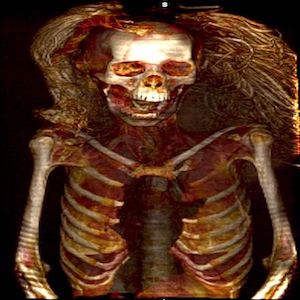
The anguished expression on the face of a 3,500-year-old mummy in the Egyptian Museum in Cairo was probably caused by a painful death, rather than a botched preparation of her body for the afterlife, a study in Frontiers in Medicine has found.
‘The Screaming Mummy’ was found in 1935 in el-Deir el-Bahari in Luxor, under the service tomb of Senmut, royal architect of the Egyptian queen, Hatshepsut, indicating it may have belonged to a family member.
Sahar Saleem, a prominent mummy radiologist and a professor at Kasr Al-Ainy, and archeologist, Samia El-Merghani used CT scans, X-ray and other techniques to examine the mysterious mummy.
“The open-mouth phenomenon is rare in ancient Egypt, unlike the mummies of other civilizations, like the Peruvians, which left the mummy with its mouth open, perhaps due to poor mummification,” Saleem explains.
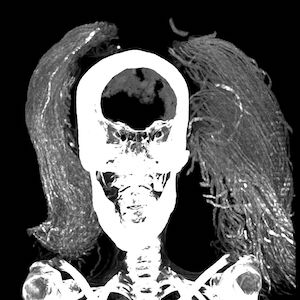
Despite speculaton that the gaping mouth was the result of a bad job that failed to secure the mouth shut, the authors found that the embalming materials used in on the mummy were expensive, imported substances that would only be used for high-ranking individuals or members of the royal family. This, the authors say, discredits theories that the screaming mouth was due to a botched, hasty process that allowed the mouth to gape after death as the muscles relaxed during decomposition.
Saleem and her colleagues speculate instead that the reason behind the facial expression may be a painful death that led to cadaveric spasm.
“This is a type of spasm that explains the final act before death and occurs after intense physical or emotional activity, which leads to immediate post-mortem stiffness,” Saleem adds.
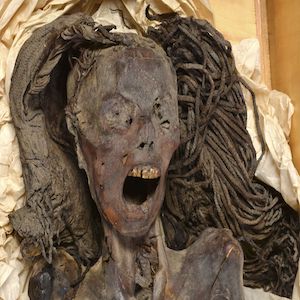
As the contracted muscles become rigid immediately after death, embalmers may not have been able to close the mouth and mummified the contracted body before it decomposed or relaxed.
They also found that there was no embalming incision, and that the internal organs were not removed, which Saleem describes as a surprise.
“The practice of mummification in the New Kingdom (1550-1069 BC) was to remove the viscera, except for the heart,” she explains.
The woman was around 48 at the time of her death, and Saleem adds that she probably underwent a series of medical interventions during her life and that her teeth were extracted for unknown reasons.
Scanning electron microscopy (SEM) was used to study natural and wig hair samples at different magnifications to understand their structure. “These tests are non-destructive and can therefore be used safely to identify and characterize ancient biological tissues, such as skin and hair,” El-Merghani says.
In ancient Egypt, wigs were used on the living and the dead, and the screaming mummy wore a distinctive wig divided into two, braided parts extending down both sides to her shoulders. The wig was made of date palm fibers and had traces of juniper and frankincense. Frankincense was also found in skin samples, and henna in samples from her natural hair.
She was wearing gold and silver rings with a jasper scarab attached. These are currently displayed with the rest of the mummy’s possessions at the Metropolitan Museum in New York.
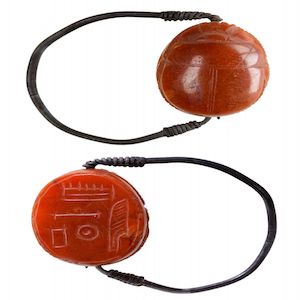
An expensive departure
The intricate details on the wig and substances used for embalming all indicate that the body was carefully mummified, and that no corners were cut in the process, unlike other rare cases of screaming mummies, which showed poor embalming techniques.
Years ago, Saleem examined two similar royal mummies from the Deir el-Bahari cache. They were identified as Pentawar and the unknown woman.
Pentawar, the prince of the Twentieth Dynasty, committed suicide after he was charged of preparing a plot known as “the harem conspiracy” to assassinate his father, Ramesses III. Historians have concluded that the poor embalming of the body and the way his mouth remained open are signs that the disgraced prince’s body was improperly mummified in a haste. The mummy was wrapped in sheepskin, which was highly unusual and considered ritually impure.
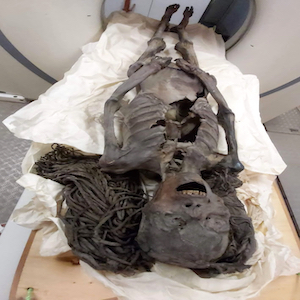
The other mummy was most likely that of Ahmose-Meritamon, the daughter of King Seqenenre Tao whose CT scans revealed significant coronary atherosclerosis, indicating that she may have died of a heart attack and her body was not found before rigor mortis kicked in. Meritamon's open mouth was likely open due to the natural post-mortem muscle relaxation.
While Saleem’s scans on the Screaming Mummy were useful in understanding how wigs were made in ancient Egypt and correcting previous theories about her, researchers were not able to indicate the cause of death. This remains a mystery, like the location of Hatshepsut's beloved architect Senmut, who suddenly left public life and whose body was not buried in either of his two prestigious tombs.
Link to original article is here.
doi:10.1038/nmiddleeast.2024.271
Stay connected: